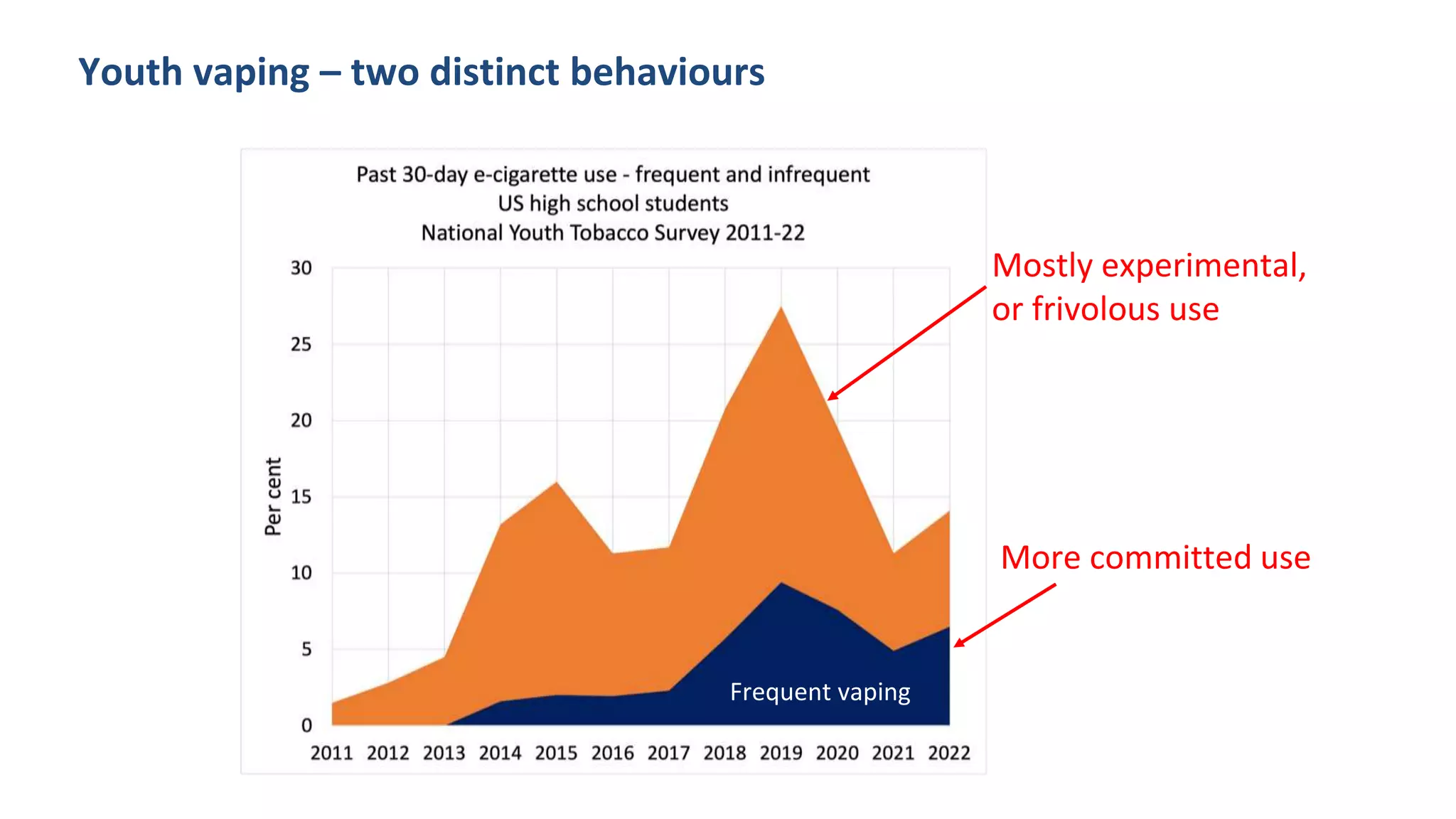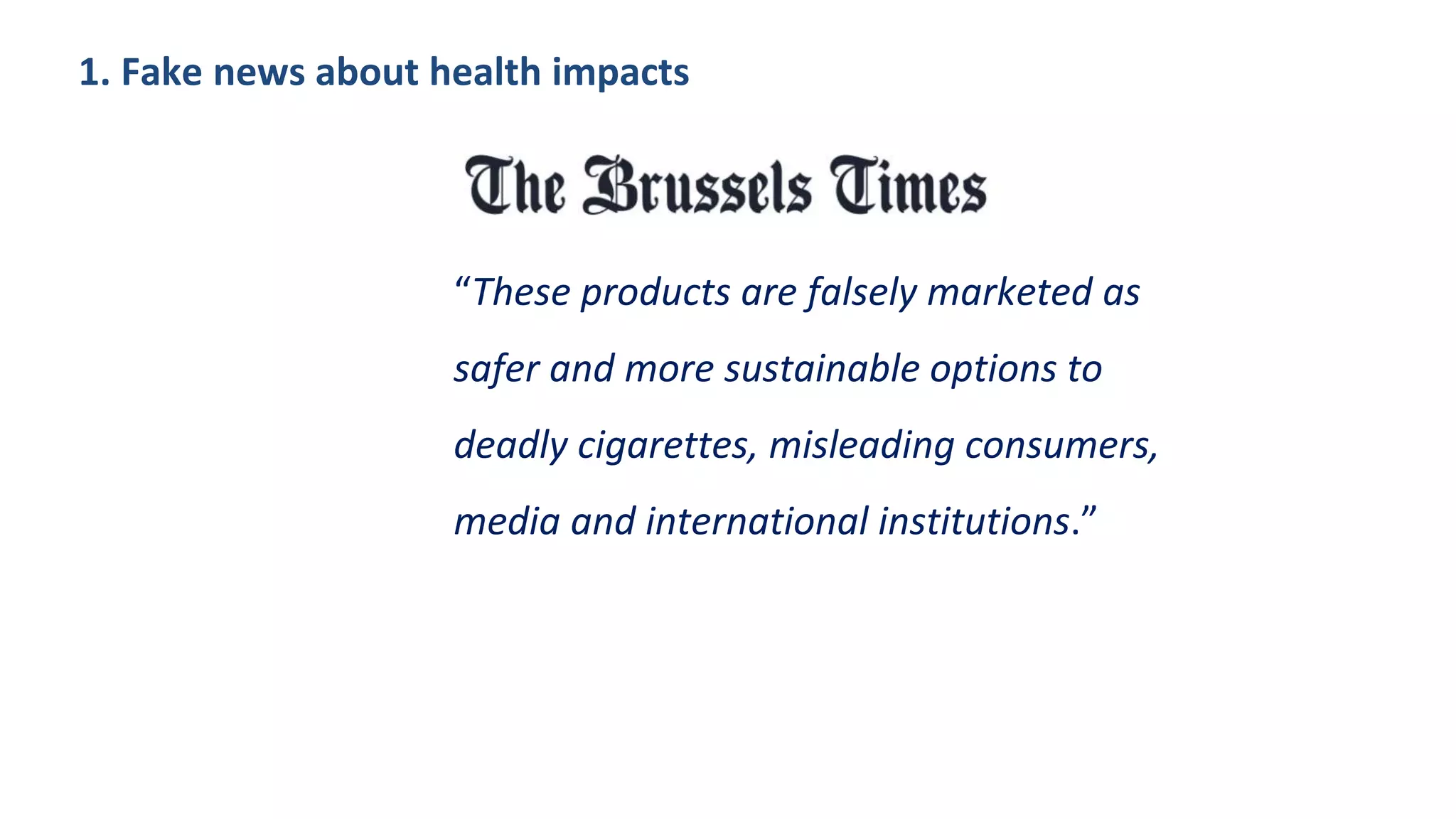The document discusses the multifaceted use of nicotine, highlighting its psychoactive effects, potential cognitive enhancements, and implications for addiction. It questions traditional views on harm associated with nicotine, especially in light of reduced-risk delivery systems like vaping, and explores the motivations behind youth vaping. Ultimately, it suggests a need to rethink nicotine's role in public health and its perception as a recreational stimulant without significant harm.


































































